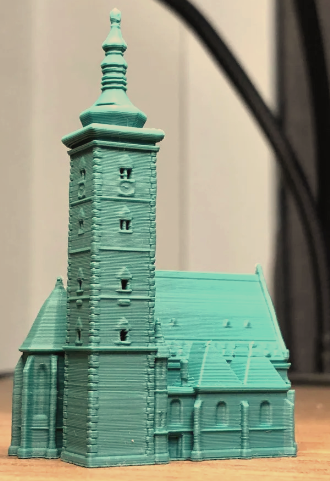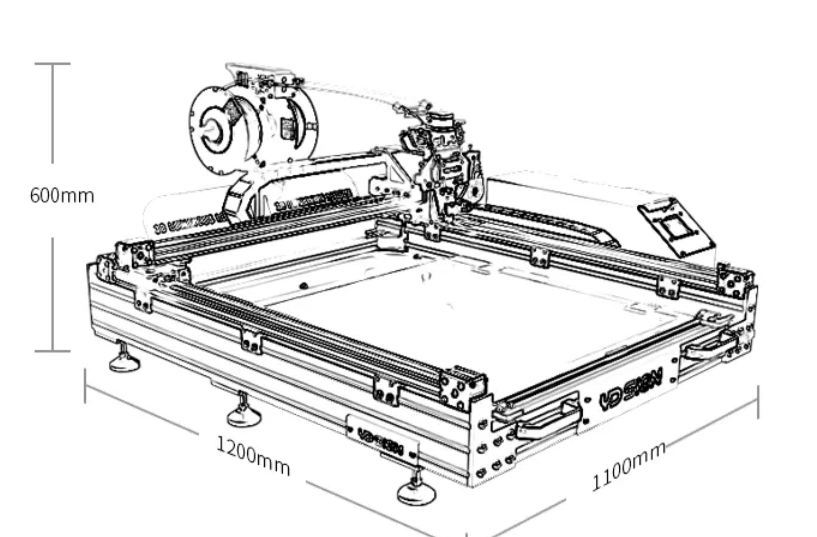3D Printed ABS
RAPID PROTOTYPING & SMALL BATCH PRODUCTION
Rapid prototyping serves as an invaluable tool for businesses aiming to swiftly iterate and test their product designs, enabling them to refine concepts and identify improvements efficiently. For small batch production runs, 3D printing technologies (FDM) and (SLS) provide a cost-effective and agile solution, enabling companies to produce limited quantities of customized components or products without the need for expensive tooling or lengthy setup times
Fused Deposition Modeling
or FDM 3D Printing
FDM printers work by heating a thermoplastic filament to its melting point and then extruding it, layer by layer, to create a three dimensional object.
FDM printers are relatively inexpensive and easy to use, making them a popular choice for home and small-scale 3D printing

Stereolithography (SLA)
Stereolithography works by using a photopolymer resin that is cured by exposure to light.
The machine traces out the desired geometry layer by layer using a computer-controlled moving laser beam.
The beam is directed by mirrors that are positioned around the build platform.

CAD DESIGN & REVERSE ENGINEERING
When it comes to certain projects, a computer-aided design, or CAD, can be extremely beneficial. A main advantage to using CAD is the fact that it provides experts with greater accuracy. This is done by replacing manual drafting with electronic design software, such as SketchUp, Fusion 360, or AutoCAD Design Edition.
SOME INFOMATION ABOUT THE MATERIAL
Acrylonitrile Butadiene Styrene Copolymer , ABS is a sturdy, plastic material that is perfect for a variety of applications. It is made from polymerizing styrene and acrylonitrile in the presence of polybutadiene. This process gives it a number of unique properties, including great impact strength and resistance to chemicals.
ABS is most commonly used in the manufacturing of car parts and electronic components. It is also popular for 3D printing applications. Due to its high melting point, ABS is often used in food packaging and in the production of medical devices.
While ABS has a number of great properties, it is not without its drawbacks. One of the most notable is its tendency to emit toxic fumes when heated. For this reason, it is important to use ABS in well-ventilated areas.
Despite its drawbacks, ABS is a versatile and popular material that is here to stay. Thanks to its many benefits, it will continue to be used in a variety of industries for years to come.
ABS emits a strong odor when printed, the odor commonly known as burnt plastic. Not only does this smell makes it very uncomfortable to stay in the same room as the printer when it is working, but there are also studies that prove that the fumes are toxic.
tensile strength of 4,700 psi
Contact us
Address
Enterprise House
Ocean Way
Ocean Villiage
Southampton
SO14 3XB
(+44) 02381244996
(+44) 07876131539
info@mitchellsson.co.uk
ABS (Acrylonitrile Butadiene Styrene) is a popular thermoplastic material used for 3D printing. Here is some technical data on 3D Printed ABS Plastic filament:
1. Melting Temperature: The melting temperature for ABS is around 220-250°C. It is important to maintain a consistent temperature throughout the printing process to ensure quality prints.
2. Filament Diameter: The diameter of ABS filament is usually 1.75mm or 3mm, but it can vary depending on the manufacturer.
3. Print Bed Temperature: The recommended print bed temperature for ABS is around 80-110°C. This is necessary to ensure good adhesion to the print bed.
4. Cooling: ABS does not require any cooling during the printing process. In fact, cooling can cause warping or cracking of the print.
5. Tensile Strength: ABS has a high tensile strength of around 40-50 MPa, which means it can withstand a lot of stress without breaking.
6. Flexural Strength: ABS also has a high flexural strength of around 60-70 MPa, which means it can bend and resist deformation without breaking.
7. Impact Strength: ABS has good impact strength, making it a good choice for parts that will be subjected to shock or vibration.
8. Chemical Resistance: ABS is resistant to a wide range of chemicals, making it suitable for use in harsh environments.
9. Print Speed: ABS can be printed at a relatively high speed, but it is important to maintain a consistent temperature throughout the process.
10. Post-processing: ABS can be sanded, painted, and glued. It can also be vapor smoothed using acetone to give it a smooth, glossy finish.
Latest Articles
About Us
All Rights Reserved | Mitchell and Son Additive Manufacturing Ltd | Registered Company in England and Wales | Company Number : 12038697
| Public Liability Insurance no. 14615097
Insurer: AXA XL











